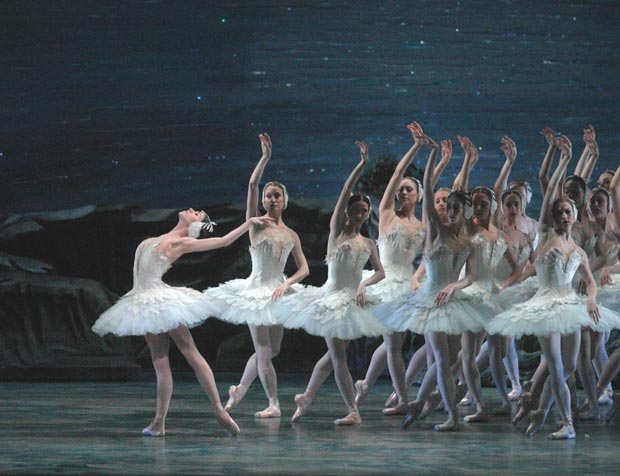
© Rosalie O’Connor. (Click image for larger version)
American Ballet Theatre
Swan Lake
Three Masterpieces: Bach Partita, Seven Sonatas, Fancy Free
Brisbane, Queensland Performing Arts Centre
4, 5th September 2014
www.abt.org
www.qpac.com.au
American Ballet Theatre (ABT) is rightly proud of its reputation as a touring company. It has had many touring firsts over its long and illustrious history, which now spans seventy-five years. But until 2014 it had never toured to that far-flung corner of the world, Australia, a country populated by ballet-lovers as well as kangaroos and koalas, and also well-known historically as a host to some of the world’s most famous touring companies.
ABT has just finished a two week season in Australia – in Brisbane, Queensland, to be exact. It is the third international ballet company to arrive in Brisbane in the past few years under the banner of the Queensland Performing Arts Centre’s International Series, and it follows Hamburg Ballet in 2012 and the Bolshoi Ballet in 2013.
For its first Australian season ABT brought with it one assured box-office success, Kevin McKenzie’s full-length Swan Lake, along with a mixed bill program called Three Masterpieces, which comprised Fancy Free by Jerome Robbins, Bach Partita by Twlya Tharp and Seven Sonatas by Alexei Ratmansky. The program presented Australian audiences with not only a reflection of the company as it exists today, but with a clear example of its early vision as well. That initial vision, dating back to 1940, was that the world’s greatest artists could combine with American talent to produce contemporary ballet that could take its place proudly beside the great classics of the repertoire.

© Gene Schiavone. (Click image for larger version)
McKenzie’s Swan Lake struck a chord with me: it was the Swan Lake I remember as a young girl. Yes, it was newly conceived in parts, but it was clearly recognisable as the old story of a woman turned into a swan by a sorcerer and doomed to die unless someone swore eternal love to her. The story flowed along, asking us to suspend belief along the way, and bringing us in the end to the realisation that love endures tragedy. While I have enjoyed many an updated version since I saw my first Swan Lake, the atavistic elements of McKenzie’s production took me back to the one I knew as a child. I loved it for that reason.
There were, of course, odd moments that made me wince. The truncated Act IV, for example, was not the best part of the ballet. It rushed us through, instead of building us up to the dramatic finale – the death of Odette and Siegfried who threw themselves, in spectacular fashion, into the lake. And that truly awful, very kitsch sun (design Zach Brown), which appeared over the devastated landscape of Act IV with Odette and Siegfried silhouetted against it (presumably having reached paradise in the sky?), was decidedly irritating.
Paloma Herrera has to be the most controlled Swan Queen I have ever seen. How beautifully she balances and then comes off pointe, and what a pleasure it is to watch her legs and arms fill out the phrases of the music. We see the shape of every movement so clearly as her limbs unfold, flutter and swirl. The detail is impeccable and the main Act II pas de deux was a breathtaking encounter – technically at least. I found, however, Herrera was a little cold in her connections with Siegfried, danced by Cory Stearns, and there was little contrast between her Odette and her Odile.
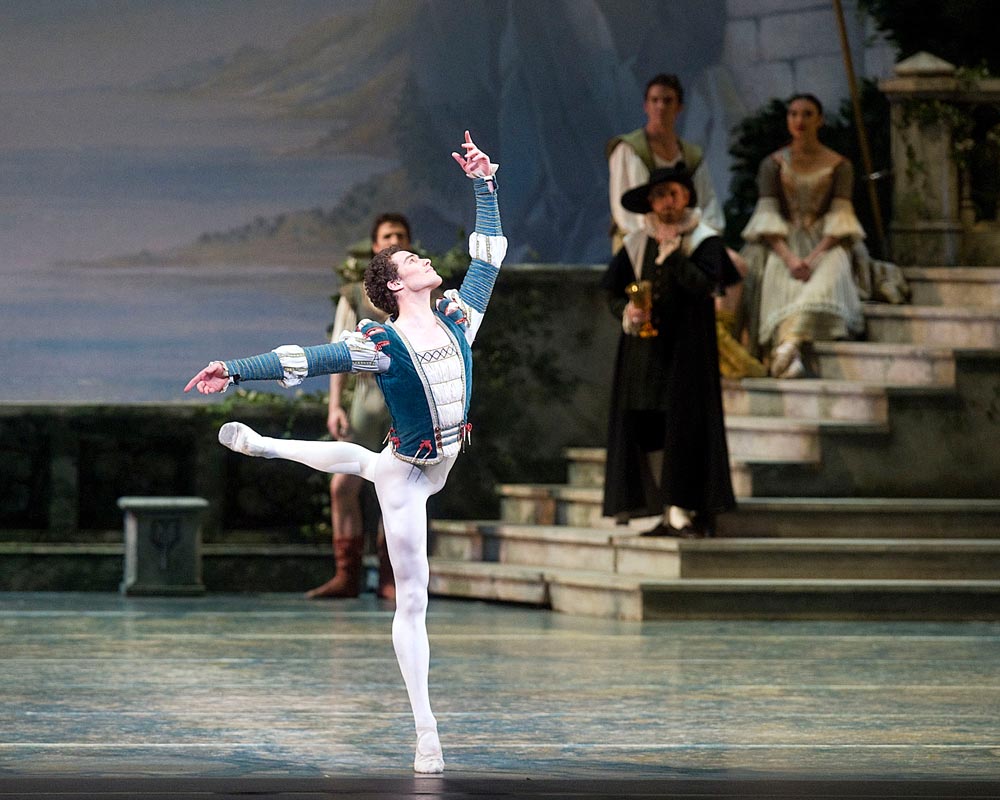
© Gene Schiavone. (Click image for larger version)
I was moved by Stearns’ solo in Act I when he pondered his last days of bachelor freedom. It seemed as if it was in slow motion, a reflection of his thoughts as they moved through his mind. And technically his legs stretched out strongly and his turns and jumps were perfectly formed and finished. Act I was distinguished, too, by some beautiful visual arrangements of the corps de ballet during formal sequences of dancing. McKenzie left nothing to chance, making sure that everyone had a place to go to, a manner of standing and a way of interacting while others were dancing.
The second program opened with Tharp’s astonishing Bach Partita – astonishing because of its remarkable and always surprising choreographic complexity. A short sequence of fouettés might be followed by small cabrioles. Or an arabesque might begin looking quite centred and purely classical, but before our eyes it would fold into itself and become something quite different. Hips occasionally wiggled sexily. A lift might be done with feet turned up as if the dancer was still standing on the floor, even though it was clear to our eyes that she (or he) was in the air.
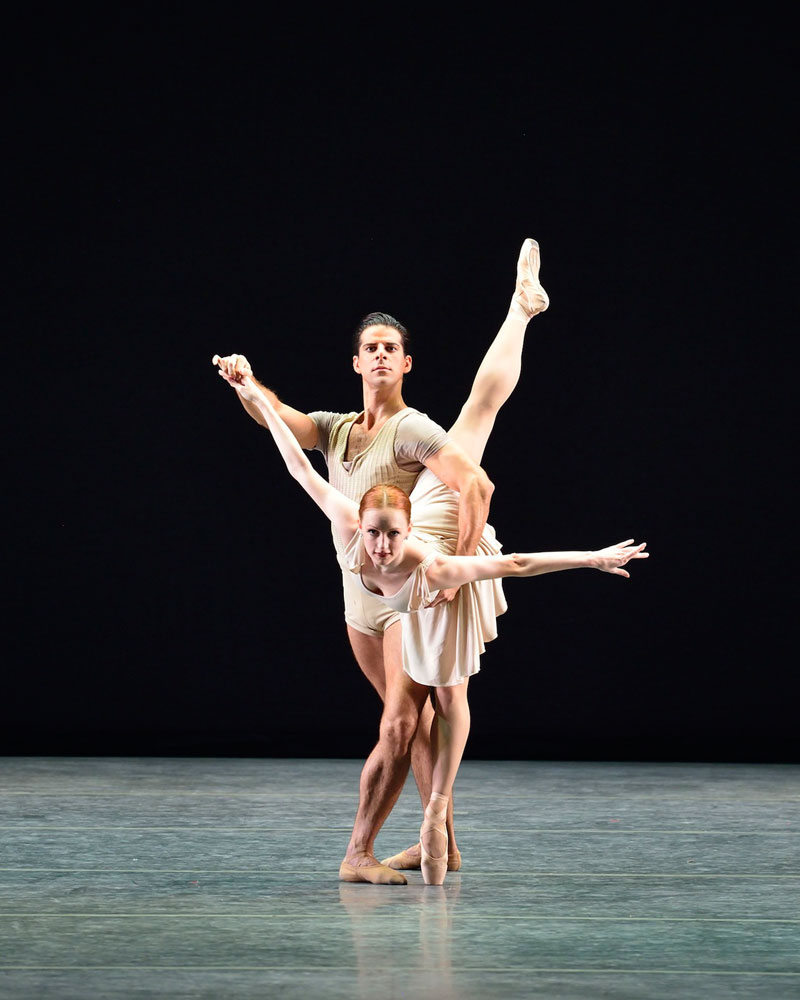
© Gene Schiavone. (Click image for larger version)
Three principal couples were the centrepiece of Bach Partita: the beautiful, serene Stella Abrera partnered by Calvin Royal III; Gillian Murphy, always engaging, partnered by Marcelo Gomes; and the pert Misty Copeland partnered by James Whiteside. And, while the six principals engaged in solos, pas de deux, or grouped together in other ways, the corps de ballet carried on with a small ballet of its own, sometimes engaging in counterpoint movement, sometimes moving in unison. Bach Partita, which was first performed in 1983 and only recentlyrevived, is many ballets in one, always exciting, ever full of surprises. Every dancer was remarkable in his or her ability to project a range of emotions associated with the changing nature of the choreography.
Abrera and Royal were paired again in Ratmansky’s Seven Sonatas and a highlight of this ballet was the long, but evocative and arresting pas de deux between them. In it choreographic shape developed largely from arm movements, which were beautifully curved, or extended softly, or stretched out longingly. This is not to say there was nothing happening with legs and upper body. There was. And, as usual with Ratmansky’s work, the upper body was fluid and the legs were used in unusual ways. But the arms told the story. Two other couples made up the complement of six dancers, Sarah Lane and Herman Cornejo and Christine Shevchenko and Josef Gorak.

© Gene Schiavone. (Click image for larger version)
Seven Sonatas is a perhaps a ballet about courting. Or is it simply a little conversation between couples? However we read it, it is charming in its implied narrative, gorgeous in its choreography and beautifully danced by dancers of ABT, on whom it was made in 2009. It is interesting too to make comparisons, non-judgemental ones, between Seven Sonatas and Bach Partita. Tharp’s surprises were hard-edged, quirky; Ratmansky’s softly flowing and amorous. Both ballets were a treat to watch.
The evening closed with Fancy Free, the first piece of choreography Robbins made and one of the earliest American creations performed by ABT. Its story of three sailors on shore leave in Manhattan, danced to music by Leonard Bernstein, generates a ballet that is in a class of its own – brash and bold – and its retro look is surprisingly engaging still. It was a treat to see Cory Stearns and James Whiteside in roles so unlike those they took in other ballets and Daniil Simkin was knockout, both in his cheeky interpretation of his sailor role and technically – those double tours en l’air ending in splits were spectacular.
No-one could fail to be impressed by the versatility of ABT’s dancers and by the diverse repertoire they brought. They did themselves, their company and their country proud.








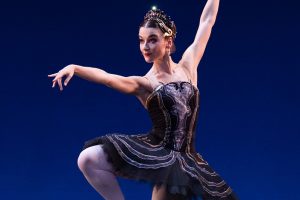

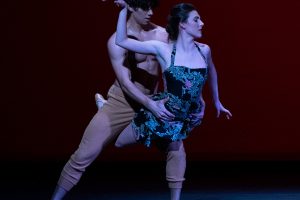
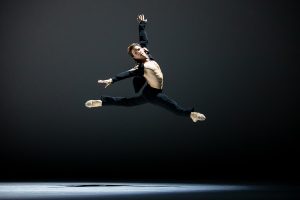


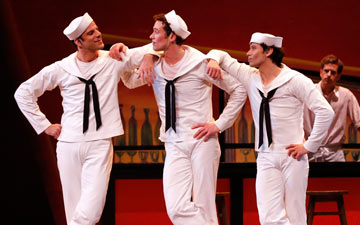


You must be logged in to post a comment.